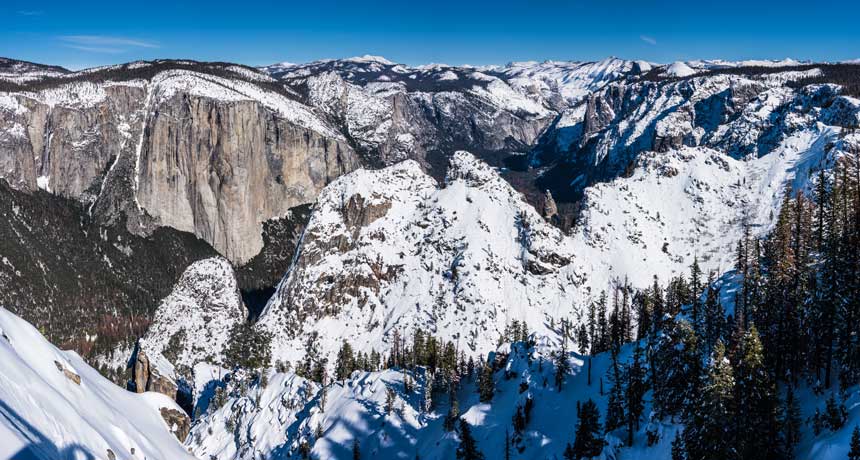Snow and rain tug on earthquake faults in California

Winter weather brings seismic tremors. A new study reveals how water buildup and runoff throughout the year can increase stress along faults in California, triggering small earthquakes.
“This kind of observation is extremely important to constrain our models of earthquakes,” says Jean-Philippe Avouac, a geologist at Caltech who was not involved in the study. Improved models could ultimately help scientists better forecast seismic activity.
Snow and rain compress mountain ranges in Northern California several millimeters during wet winter months. But with the weight of the water gone during the dry summers, the landscape lifts back up. This seasonal squeeze and release of the terrain puts stress on nearby faults, which can set off more small earthquakes.
Researchers compared observations of ground movement from 661 GPS stations in California with the state’s earthquake record from 2006 to 2014. The landscape’s seasonal, water-induced rise and fall corresponded to periodic increases in small quakes, scientists report in the June 16 Science. Most of the quakes were between magnitude 2 and 3 — so small that they wouldn’t have been widely felt, says study coauthor Christopher Johnson, a seismologist at the University of California, Berkeley.
“It’s not like there’s an earthquake season,” Johnson says. Some faults experience more significant stress increases when the land is compressed, others when the land rebounds, depending on the fault orientation. So different faults exhibit more small earthquakes at different times of year. For instance, faults along the Sierra Nevada’s eastern edge have more tremors in late winter and early spring. But the San Andreas Fault system to the west sees more quakes in late summer and early fall, when water levels have dropped and the land is rebounding.
“We’re not yet at the point where we could start applying this knowledge to the hazard forecast,” Johnson says. But the new findings are helping geologists better understand what forces can trigger rumbles under our feet.